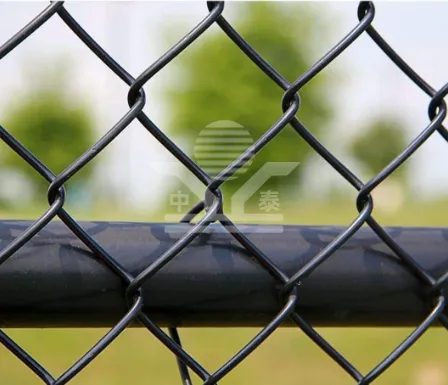The Versatility of Rope Mesh Netting Applications and Benefits
Rope mesh netting has become an essential material in various industries due to its multifaceted applications and inherent advantages. This durable, flexible, and lightweight mesh is made from interwoven ropes, creating a network of small holes that allow air and light to pass through while providing structural integrity. From construction sites to recreational uses, rope mesh netting has proven to be an invaluable asset.
What is Rope Mesh Netting?
Rope mesh netting is constructed using high-strength ropes made from materials such as nylon, polyester, or polyethylene. These ropes are intricately woven to form a mesh pattern, resulting in a product that is sturdy yet flexible. The design of rope mesh netting allows it to be used in various configurations, making it an adaptable choice for different purposes. Its lightweight nature makes it easy to handle and install, further adding to its appeal.
Applications in Construction and Safety
One of the primary applications of rope mesh netting is in construction and safety. Builders and contractors utilize this netting as a safety measure to prevent falls from heights. By installing rope mesh netting on scaffolding or along the perimeter of a work site, workers are shielded from potential hazards. The mesh serves as a protective barrier, giving construction teams peace of mind while they carry out their tasks.
Moreover, rope mesh netting plays a crucial role in maintaining the safety of construction materials. It can be used to secure tools and equipment, preventing them from falling and causing injury or damage. Additionally, this netting is employed for scaffolding encasement, which keeps debris contained and minimizes the risk of accidents on site.
Environmental Protection
Beyond its construction applications, rope mesh netting is employed in environmental protection endeavors. In areas prone to soil erosion, rope mesh can be used as a protective layer to hold soil in place, particularly on steep slopes. The mesh allows for moisture retention and promotes the growth of vegetation, which further stabilizes the soil. This application is vital in combating land degradation and preserving natural habitats.
rope mesh netting

In aquatic environments, rope mesh netting is used for fish habitat enhancement. By creating structures that mimic natural environments, such as reefs, the mesh provides refuge for young fish and promotes biodiversity. Such initiatives are crucial for sustainable fishing practices and the restoration of aquatic ecosystems.
Recreational Uses
Rope mesh netting also finds its place in recreational applications. It is commonly used in sports facilities, particularly in climbing walls, adventure parks, and playgrounds. The robust nature of the mesh ensures that it can withstand significant forces, providing safety for users while allowing for exciting recreational activities.
In addition, rope mesh netting can create safe environments for children in play areas. The soft yet strong design allows children to interact safely, reducing the risk of accidents. This feature is particularly beneficial in outdoor settings, where traditional barrier materials may not provide adequate safety.
Aesthetic and Architectural Applications
The aesthetic appeal of rope mesh netting is another reason for its growing popularity. Architects and designers are increasingly incorporating this material in their projects to create modern, visually interesting spaces. The open weaving pattern of the mesh creates a sense of transparency and lightness, allowing for creative designs in fencing, wall partitions, and art installations.
In landscaping, rope mesh netting can be used to enhance visual appeal while serving functional purposes. It can support climbing plants, create natural barriers, and add texture to garden designs.
Conclusion
Rope mesh netting is a highly versatile material with a wide array of applications across different sectors. Its strength, flexibility, and lightweight characteristics make it suitable for construction safety, environmental protection, recreational uses, and aesthetic projects. As industries continue to seek innovative solutions, the demand for rope mesh netting is likely to grow. Its ability to combine practicality with safety and environmental considerations positions it as a key player in the materials landscape of the future. Whether it’s on a bustling construction site or enhancing a recreational area, rope mesh netting proves to be an indispensable asset in today’s world.
-
Why Galvanized Trench Cover Steel Grating Resists Corrosion
NewsJul.10,2025
-
The Versatility and Strength of Stainless Expanded Metal Mesh
NewsJul.10,2025
-
Load Calculations in Steel Grating Platforms
NewsJul.10,2025
-
Keeping Pets and Kids Safe with Chicken Wire Deck Railing
NewsJul.10,2025
-
Hole Diameter and Pitch for Round Perforated Metal Sheets
NewsJul.10,2025
-
Aluminium Diamond Mesh in Modern Architecture
NewsJul.10,2025
Subscribe now!
Stay up to date with the latest on Fry Steeland industry news.

